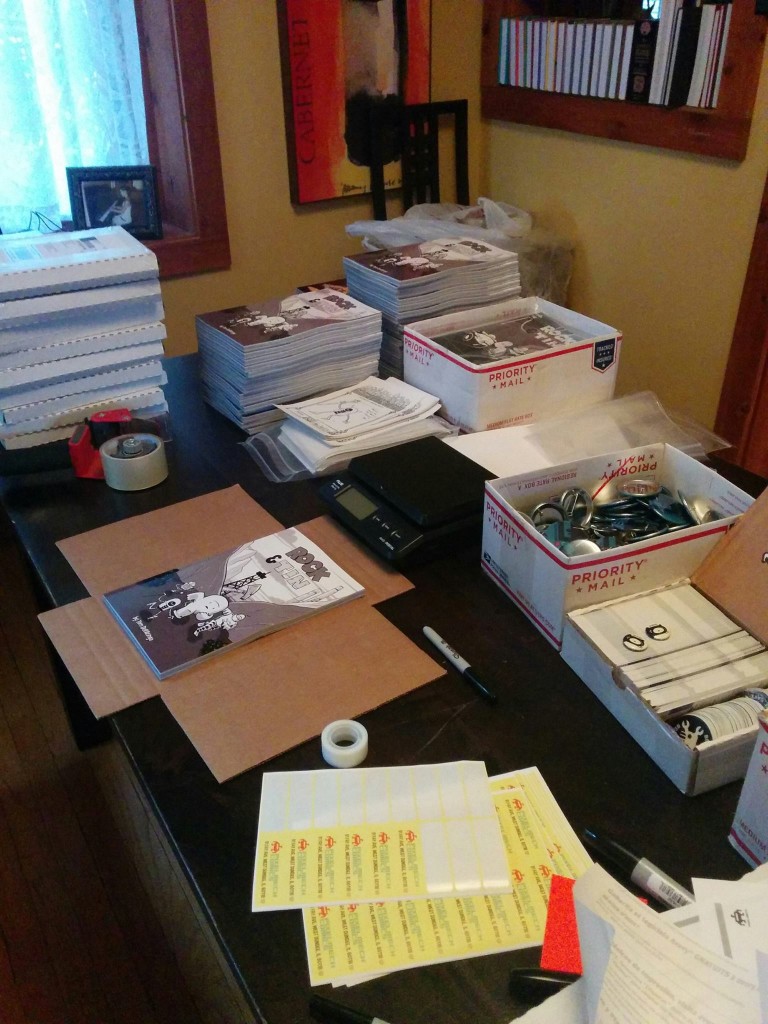Pixelmech
What about comics drew you in and was this a lifelong love or did it start & stop & start again?
I’m a lifelong comics, art and story lover. Comics have always been very special to me. I can remember be very young and learning to read, sitting on the couch with my mom reading “Snoopy and the Red Baron” out loud to her. I kept saying “world war eye” instead of “world war one.” It was written “World War I” and I didn’t quite understand Roman numerals yet. But comics made me want to read.
From that point forward, I read comics whenever I could. In elementary school, every time the opportunity came to order books from the Scholastic Book Clubs, I would order Peanuts books – and any other comics that looked good.I always read the comics in the newspaper. And as I grew older, I found superhero comics, and the indie comics like Groo, Bone and Cerebus the Aardvark. There’s something about the combination of a good story and wonderful visuals that’s just magic.
When I was young, I drew all the time, and when I ran out of paper, I would draw inside the fronts of book covers (this didn’t go over too well). But the visual imagery of comics is only half of the equation. I also fell in love with stories. I really loved watching things like Dr. Who, Thunderbirds, Land of the Lost, Captain Harlock, Star Blazers, Speed Racer – any kind of serialized story.
I finally put all these elements that I loved together in my first project, “Marooned – A Space Opera in the Wrong Key!” which ran for 5 years from 2007 to 2013. I followed that with my second graphic novel “Rock & Tin” in 2015.
Balancing a full-time job, marketing a Kickstarter, AND writing doesn’t seem like the easiest task—what’s your strategy for making time for everything?
It’s really difficult—and you forgot to add family in that equation. I have to be okay with the fact that I cannot promote and market the way full-time creators/companies. I make time during my lunches at work, or early in the morning/late at night when people are sleeping. I also carve out a couple hours on the weekend each day (generally early in the morning) to get some writing or drawing done. This means my progress is generally slower, but you find out that if you just keep plugging along, you can get a surprising amount of work done.
The Kickstarter is an additional stresser, however. So for the second one, I drastically simplified the campaign, and cut it down to 3 weeks from 4. This really helped a lot, and the campaign was still very successful. And since this was my second one, I was able to jump right in and not have to learn everything about running a campaign first. For example, I took my planning spreadsheet I used for Marooned, and just copied it and used it for Rock and Tin.
What advice do you have for anyone considering a crowdfunding campaign?
You absolutely must have an established audience before attempting a crowdfunding campaign. Kickstarter isn’t a magical place where people will just buy your product. It’s very much driven by people who initially will back you and help spread the word.
Secondly, you must spend a lot of time planning down to the last detail, or you will find yourself in financial trouble. I use Google Sheets to plan my campaigns (I wrote an article about that too). Carefully planning shipping expenses is key. When you read about people who lose money on their campaign, it is often poor handling of shipping costs – especially international shipping.
Lastly, use ShipStation to keep your sanity while fulfilling your orders!
How has ShipStation helped you with your business?
It has given me precious time back in my life. I used to spend so much time handling orders: copying, pasting, writing them out, printing and cutting out labels, etc. And I spent way too much time standing in line at the Post Office. Now my fulfillment process is so streamlined it almost feels like I’m cheating. This means I can handle more volume, do more business, and make more money.
What’s your favorite ShipStation feature?
It’s definitely the fact that I can just price and print my own postage at home and paste it right on the box. This has SO many advantages. Not only is packing so much faster, again – there’s no waiting in lines at the Post Office. I just drop the packages off and go home. This is especially awesome with the international packages, which used to be a real time sink (to the point where I was considering not shipping worldwide anymore.) Now the customs form is printed right on the label, and there’s no extra work.
Now my fulfillment process is so streamlined it almost feels like I'm cheating. This means I can handle more volume, do more business, and make more money.





